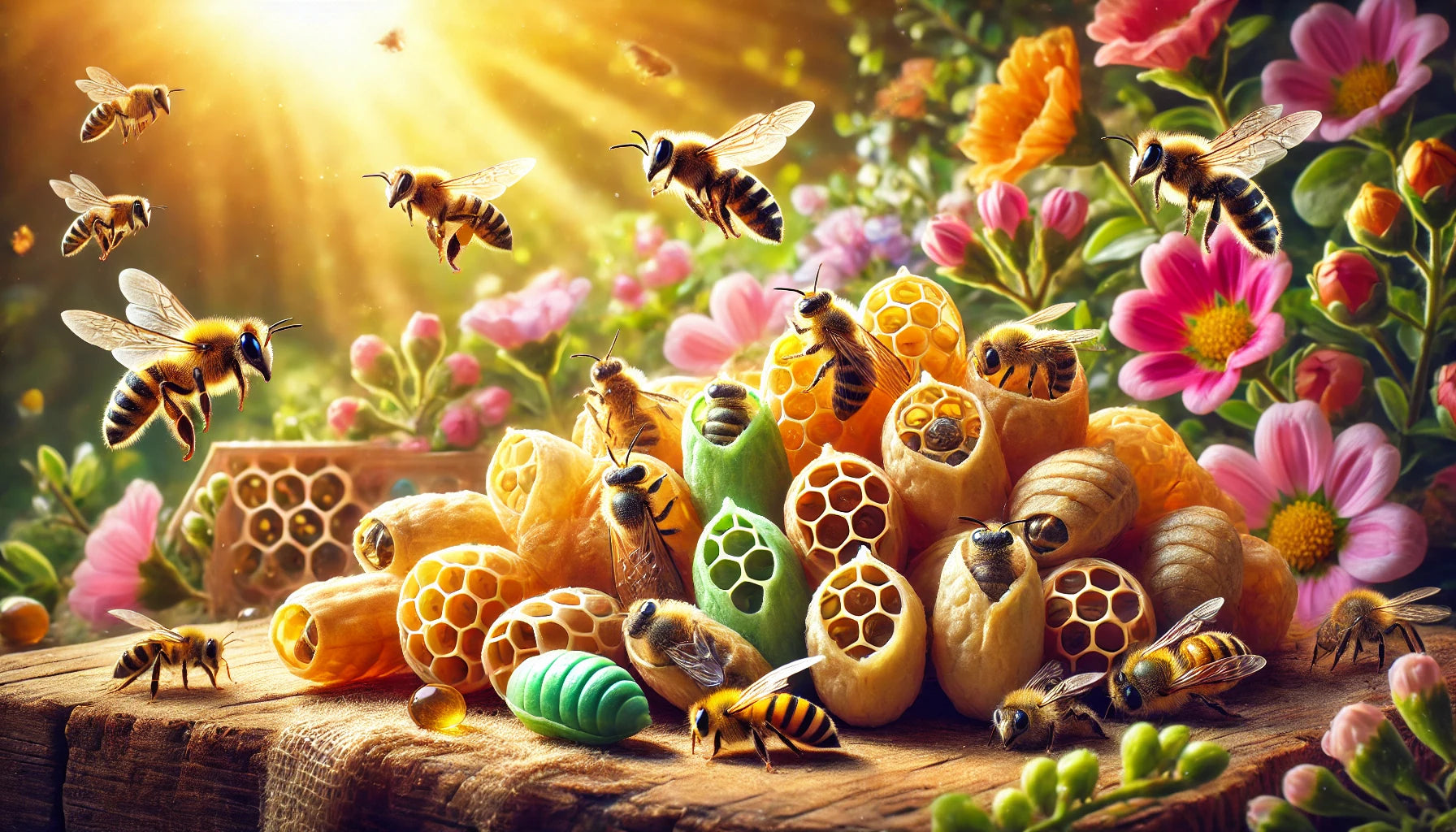Cleaning your mason bee cocoons is crucial for ensuring a healthy bee population in the next season. Over time, cocoons can collect dirt, pests, and fungal spores, all of which can harm the developing bees. Cleaning the cocoons helps eliminate these threats and increases the chances of a strong and productive bee population.
Why Cleaning Mason Bee Cocoons is Important
Mason bees are highly efficient pollinators but can be vulnerable to pests like pollen mites and fungal infections such as chalkbrood. These threats can develop inside the cocoons, potentially killing the bees or reducing their vitality. Cleaning cocoons removes harmful substances and debris that accumulate during the nesting phase, ensuring your bees emerge healthy and ready to pollinate. This process is especially vital if you're managing a bee population and learning how to start a bee farm, as a healthy bee population translates to more successful pollination.
Cleaning also helps ensure the survival of future generations, increasing the overall benefits of bees to your garden or farm. Supporting healthy mason bees contributes to biodiversity and improves the success of plants, trees, and crops.
When to Clean and Free Your Mason Bee Cocoons
The best time to clean mason bee cocoons is in the fall, once the bees have sealed their nests and entered dormancy. Signs it’s time to clean and store your cocoons include:
- Fully Sealed Nests: When the bees finish their work, they seal their nests with mud. This is an indication that they’ve completed their life cycle.
- Pests or Mites: If you see pests like pollen mites, cleaning the cocoons is crucial to prevent infestations from harming the bees.
- No Bee Activity: After the bees stop flying in and out of the nesting tubes, it’s safe to assume they’ve entered dormancy and you can begin the cleaning process.
How to Clean Mason Bee Cocoons Step-by-Step
Cleaning mason bee cocoons is a simple process that protects your bee population from diseases and pests:
- Remove the Cocoons: Gently extract the cocoons from their nests using a soft tool to avoid damaging them.
- Rinse the Cocoons: Place the cocoons in cool water and gently swirl to remove dirt and pests. Discard any cocoons that sink, as they are not viable.
- Disinfection: Soak the cocoons in a bleach solution (1 tablespoon of bleach per cup of water) for 5–10 minutes. This will kill mites, fungi, and other harmful organisms.
- Final Rinse and Dry: After disinfection, rinse the cocoons in clean water and let them air-dry on a towel. Ensure they are fully dry before storing them for winter.
This process helps remove debris and ensures your bees are free of potential threats before they emerge in spring.
Storing Mason Bee Cocoons for Winter
After cleaning, store the cocoons in a breathable container, such as a mesh bag or ventilated box. Place them in a cool, dark location like a garage or refrigerator where temperatures stay between 32°F and 38°F. It’s important to maintain proper humidity (about 50-60%) to keep the cocoons from drying out. Check the cocoons periodically to ensure they remain healthy and mold-free.
Proper storage is key to preserving the life cycle of bees, ensuring they survive the winter and are ready to emerge when spring arrives.
The Role of Mason Bees in Agriculture
Mason bees play a vital role in agriculture by efficiently pollinating fruit trees, flowers, and crops. They are capable of pollinating significantly more plants than honeybees in a single day, making them essential to farmers and gardeners alike. By supporting a healthy population of mason bees, you help increase crop yields and contribute to a thriving ecosystem.
The ability of mason bees to pollinate in less-than-ideal weather conditions, such as cooler temperatures or light rain, makes them even more reliable than honeybees in some areas. Their importance in crop production and maintaining biodiversity showcases why honeybees and mason bees are so vital to agriculture.
Prepare for a Successful Pollination Season with Swarm Commander
Cleaning your mason bee cocoons is a simple but essential task for ensuring that your bees emerge healthy and ready for the next pollination season. By taking care of their cocoons, you support not only your garden or farm but also the broader ecosystem. Proper cleaning and storage will help these essential pollinators thrive, leading to better crop yields and a stronger bee population.
Ensure your mason bees thrive with the help of Swarm Commander. Our products are designed to attract and support bees, helping you create the perfect pollination environment. Get ready for a successful bee season with Swarm Commander today!
Frequently Asked Questions About Mason Bee Cocoons
Q1. Why should I clean mason bee cocoons?
Cleaning cocoons helps remove pests like mites and fungal spores, which can harm the developing bees. Clean cocoons ensure your bees emerge healthy in spring.
Q2. When is the best time to clean mason bee cocoons?
The best time to clean cocoons is in the fall, after the bees have completed their life cycle and the nests are sealed with mud.
Q3. How do I properly clean mason bee cocoons?
Rinse the cocoons in cool water, disinfect them in a bleach solution for 5–10 minutes, then rinse and air-dry them before storing.
Q4. How should I store mason bee cocoons during winter?
Store the cocoons in a breathable container in a cool, dark place, such as a garage or refrigerator, maintaining proper humidity to prevent drying out.
Q5. What happens if I don’t clean mason bee cocoons?
Unclean cocoons are vulnerable to pests and diseases, which can reduce the number of bees that survive and negatively affect pollination.



